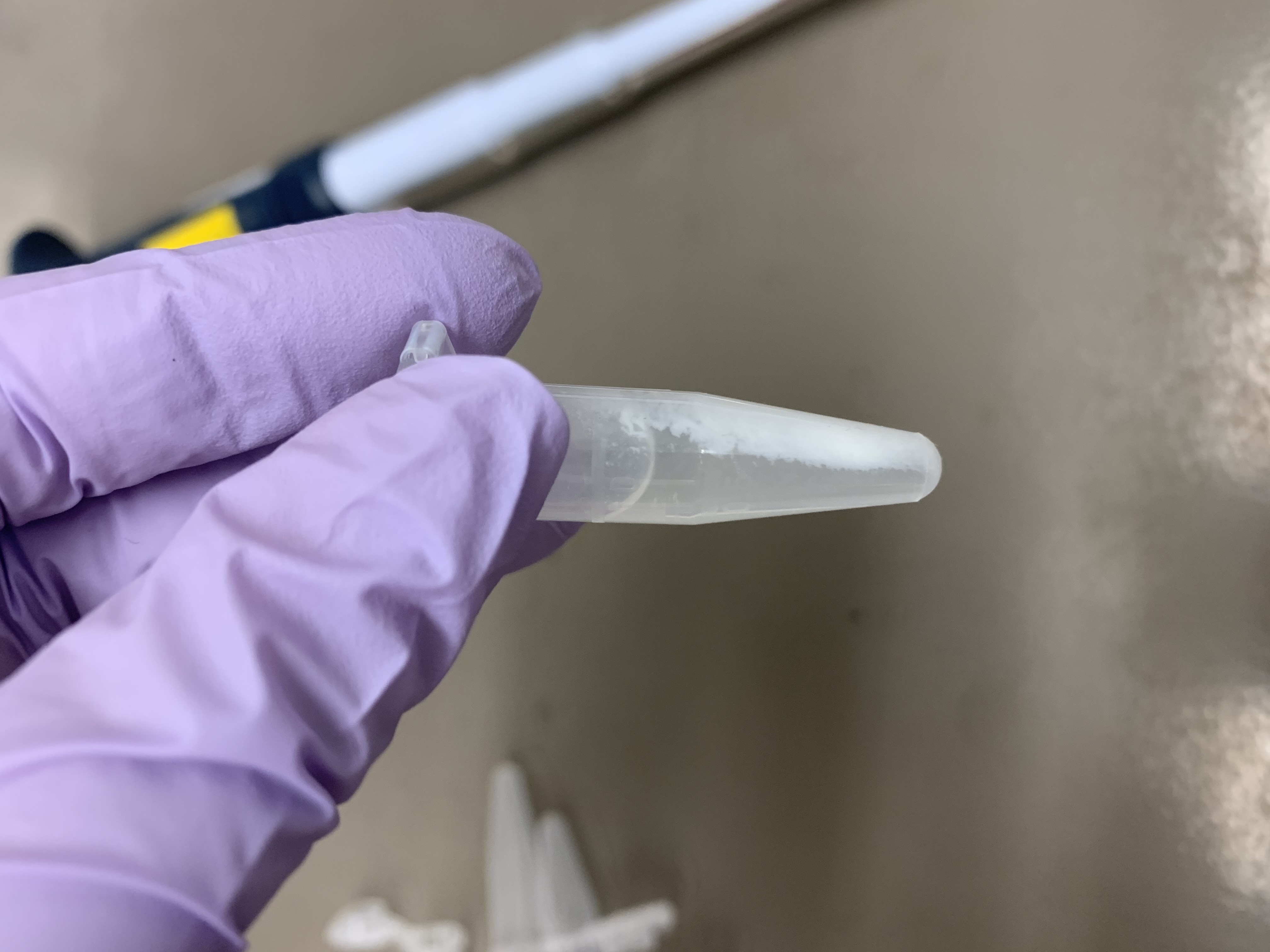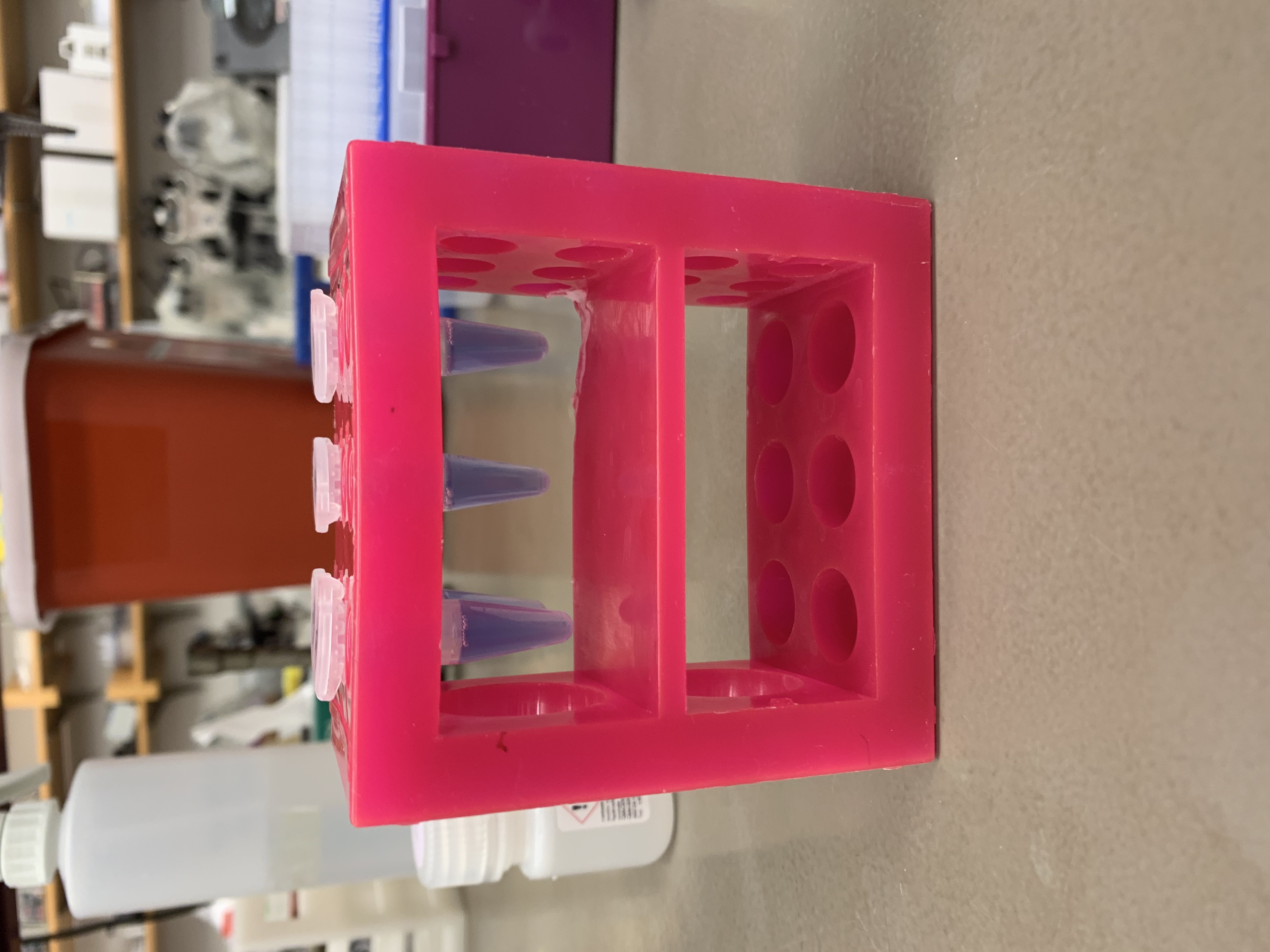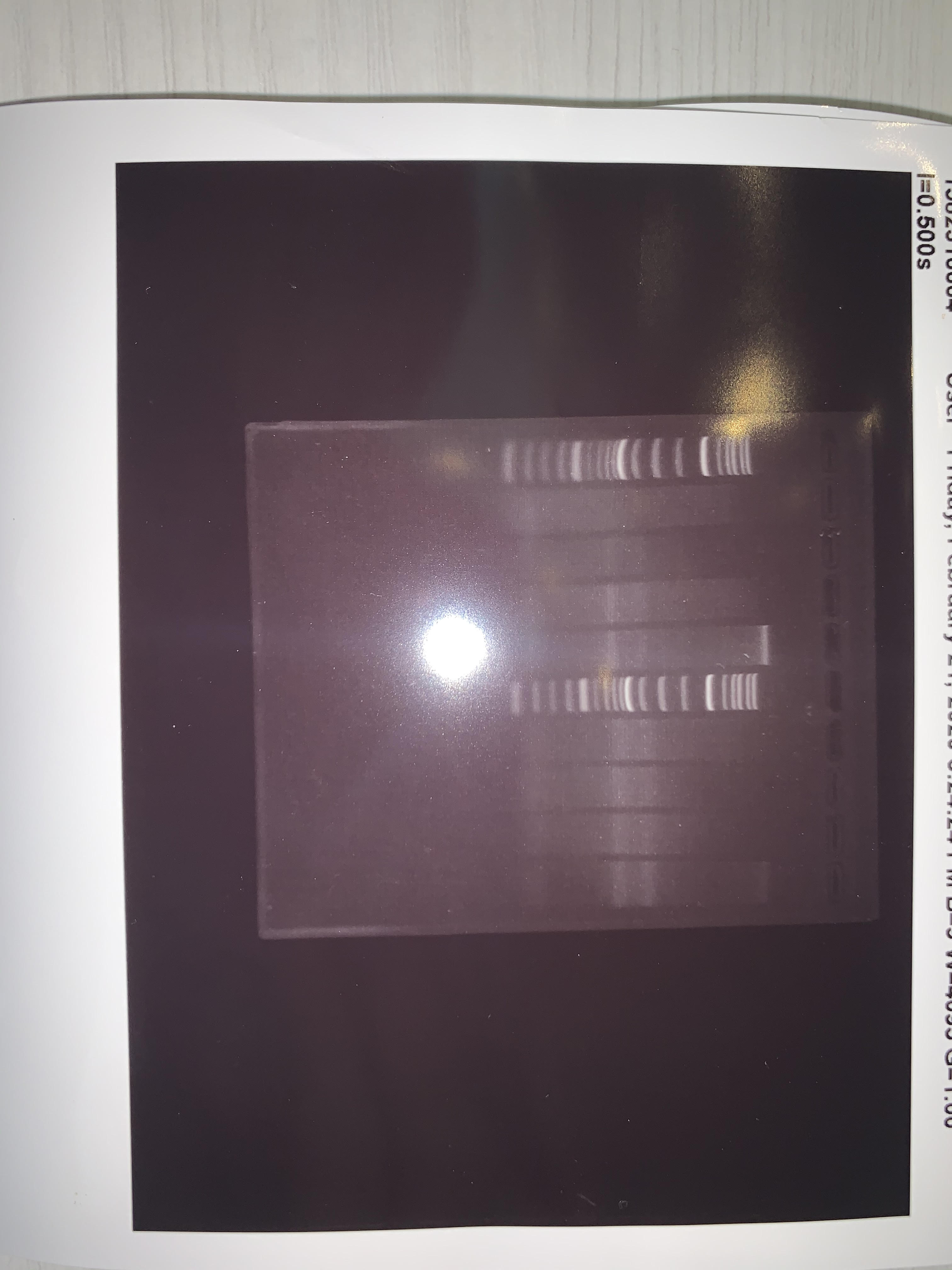Part 1: Restriction Digest to generate a ladder
In part one of the lab, you will get your bearings in the lab, isolating the plasmids pPSU1 and pPSU2 from E. coli culture and digesting them to make an open-source DNA ladder for gel electrophoresis.Part 2: Isolation of genomic DNA from bacteria
In part two of the lab, you will use your ladder from lane 1 to help isolate genomic DNA from a strain of E. coli which contains a spectinomycin resistance cassette of about 1.2 kb. You will use this genomic DNA to prepare and sequence DNA libraries in parts 3 and 4. As opposed to plasmid DNA, which is around ~10 kb in length, the E. coli /genome/ is much longer, around 4-5 Mb in length. You will isolate this DNA using a Qiagen genomic DNA extraction kit.Part 3: Shearing of the genomic DNA to create a DNA fragment library
In part three you will use sonication shear the genomic DNA to prepare a fragment library. Sonication creates tiny air bubbles in solution that cleave long pieces of DNA into fragments when they collapse. You will optimize the time and sonication energy to obtain a fragment library with average size of 2-3 kb.Part 4: Repairing and cloning the DNA library into plasmids for sequencing.
In part 4, you will repair and clone the fragments into a plasmid vector to both sequence the fragments of the E. coli genome and identify the DNA sequence responsible for antibiotic resistance. Because shearing is an uncontrolled mechanical process, it leaves the DNA with uneven ends. You will perform enzymatic repair on these DNA ends using the NEB DNA Blunting Kit to ensure they are blunt and double stranded before ligating them into plasmid DNA for cloning. You will ligate the double stranded DNA into a linearized plasmid vector which contains an ampicillin/carbenicillin resistance gene. Then, you will transform this vector into E. coli, plate on an LB-agar plate containing carbenicillin, and sequence the single colonies using Sanger Sequencing.Part 5: Identification of the Spectinomycin Resistance Cassette
Finally, you will re-transform your vector preparation and plate onto LB-agar plates containing both carbenicillin (to select for bacteria that contain the plasmid) and spectinomycin (to select for plasmid vectors that contain the isolated antibiotic resistance gene). If you’re lucky, you’ll get a colony! This is a numbers game, so don’t be discouraged if you don’t find it.Part 1: Restriction Digest to generate a ladder
I performed Minipreps using the Qiagen Kit to extract DNA from E. Coli. pPSU1 and pPSU2 plasmids were harvested to be used in restriction digests to obtain DNA ladders. The Minipreps yielded 98.2 ng/uL pPSU1 and 151.4 ng/uL pPSU2. This meant that I had to use 10.2uL pPSU1 in the restriction digest witih EcoRV, and 6.6uL pPSU2 in the restriction digest with PstI in order to have 1 ug of each. I performed a gel electrophoresis with two reference ladders (100bp and 1kb), the two uncut plasmids, and the two restriction digests.


Part 2: Isolation of Genomic DNA from Bacteria
I performed a gDNA Extraction on spectinomycin resistant E. coli using the DNEasy Kit. Between the additions of absolute ethanol and AW1 buffer, the centrifugation of my first E. coli sample did not smoothly, and the liquid did not flow through completely. However, this did not affect the final gDNA concentration, which was 175 ng/uL.
Part 3: Shearing and Gel Electrophoresis Analysis of gDNA
Restriction Digest Recipes:
- 5uL Cutsmart Buffer + 1uL EcoRI-HF + 1uL EcoRV-HF + 1uL PvuII-HF + 11.4uL gDNA + 30.6uL H2O
- 5uL Cutsmart Buffer + 1uL Sau3AI (original concentration) + 11.4uL gDNA + 32.6uL H2O
- 5uL Cutsmart Buffer + 1uL Sau3AI (1:10 concentration in buffer) + 11.4uL gDNA + 32.6uL H2O
- 5uL Cutsmart Buffer + 1uL Sau3AI (1:100 concentration in buffer) + 11.4uL gDNA + 32.6uL H2O
I ran a gel electrophoresis with 25uL of each restriction digest and 5uL of loading dye alongside a 1kb ladder. The smears indicate that the restriction digest was performed successfully and the genomic DNA was sheared into fragments of varying sizes. I excised the portions of the digest between 1.5-3.5kb in order to performan an extraction.

Part 4: Creating Plates to Grow Bacterial Colonies
I poured plates on which to grow the carbenicillin resistant and (hopefully) spectinomycin resistant bacterial colonies. The carbenicillin-only plates consisted of 10mL of media and 10uL of carbenicillin. The carbenicillin and spectinomycin plates consisted of 20mL of media and 20uL of each antibiotic.